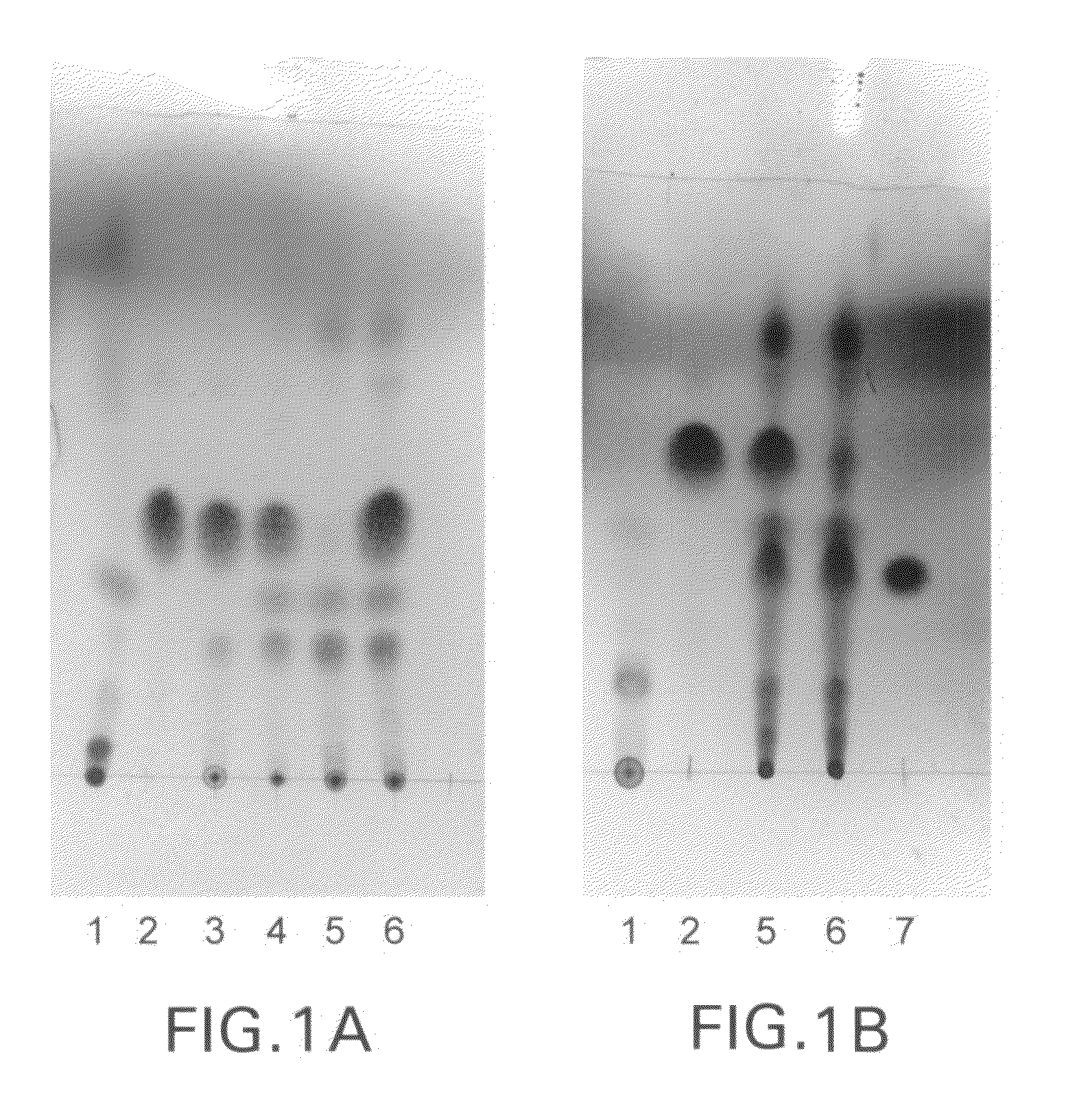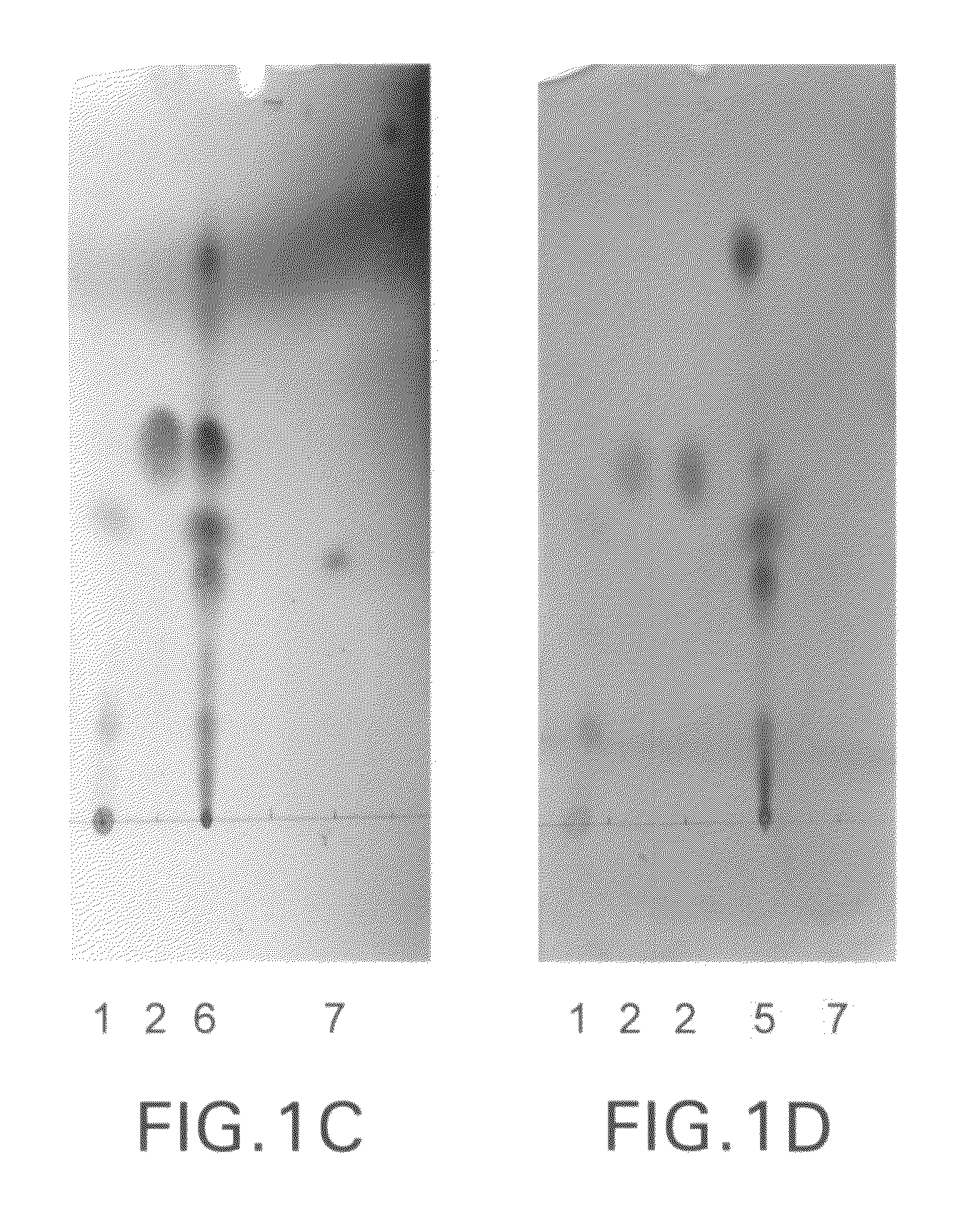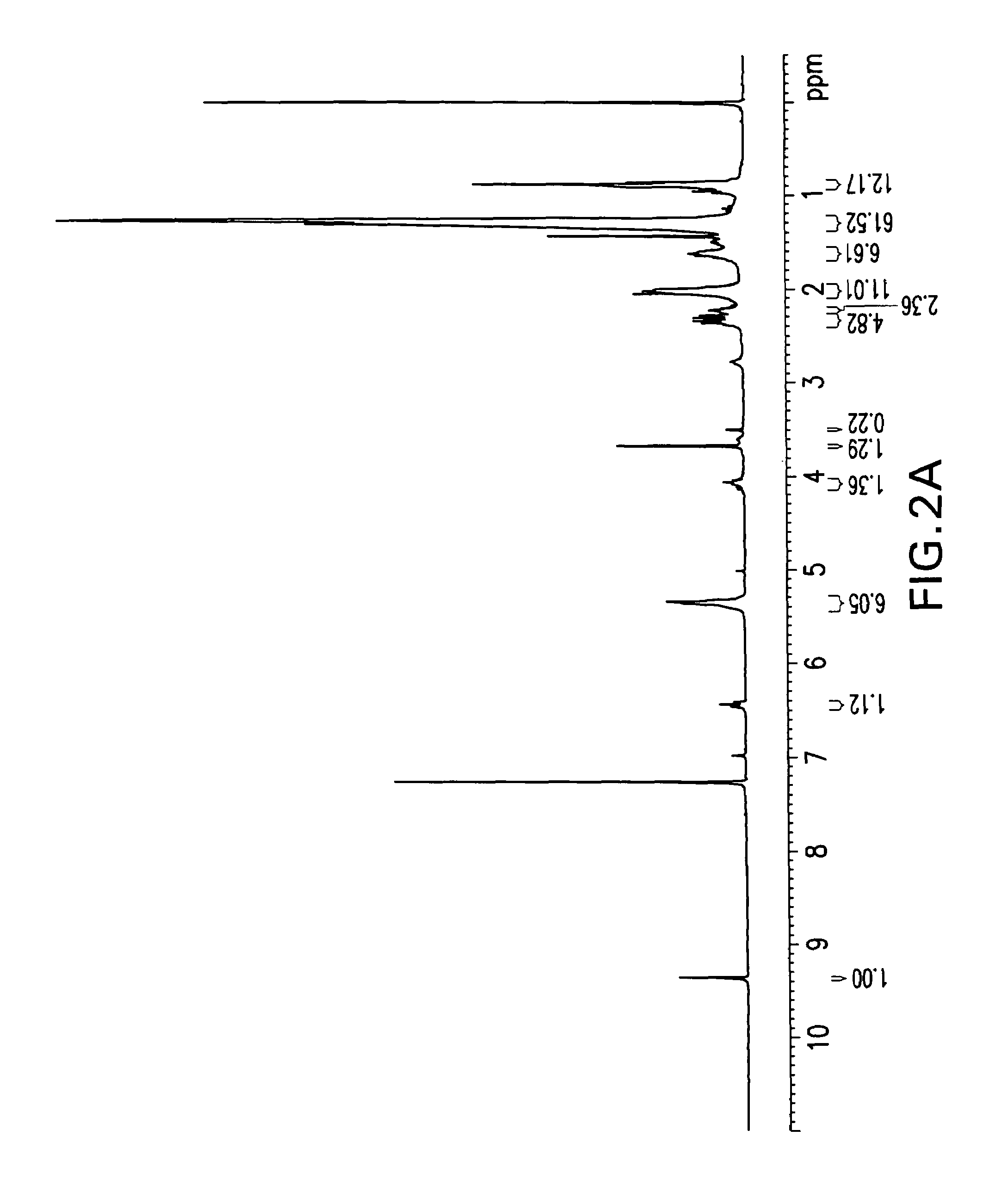Enzymatic method of making aldehydes from fatty acids
- Summary
- Abstract
- Description
- Claims
- Application Information
AI Technical Summary
Benefits of technology
Problems solved by technology
Method used
Image
Examples
example 1
[0097]Recombinant carboxylic acid reductase (CAR) from Nocardia sp. NRRL 5646 was tested for its ability to reduce oleic acid under in vivo and in vitro conditions.
Materials and Methods
[0098]Chromatography: Organic solvents were obtained from Fisher scientific. Thin Layer Chromatography (TLC) was carried on Silica gel on polyester plates (0.25 mm Aldrich) or on Glass Plates (0.25 mm, Whatman). TLC plates were developed in solvent mixture of hexanes: ethylacetate: glacial acetic acid (75:25:0.1 v / v / v) and visualized by spraying with either p-anisaldehyde stain (0.5 mL of p-anisaldehyde and 0.5 mL of H2SO in 60 mL methanol) or with phosphomolybdic acid (7% (w / v)) in ethanol followed by heating.
[0099]Fermentation and screening procedures: E. coli BL21 Codon Plus® (DE3) RP / pPV 1.184 (car+sfp) cultures were prepared as described in US Pat. Appl. Publ. No. 2004 / 0180400 A1, which is incorporated by reference herein in its entirety.
[0100]All solutions were prepared in distilled, deionized w...
PUM
| Property | Measurement | Unit |
|---|---|---|
| temperatures | aaaaa | aaaaa |
| temperatures | aaaaa | aaaaa |
| pH | aaaaa | aaaaa |
Abstract
Description
Claims
Application Information
 Login to View More
Login to View More - R&D
- Intellectual Property
- Life Sciences
- Materials
- Tech Scout
- Unparalleled Data Quality
- Higher Quality Content
- 60% Fewer Hallucinations
Browse by: Latest US Patents, China's latest patents, Technical Efficacy Thesaurus, Application Domain, Technology Topic, Popular Technical Reports.
© 2025 PatSnap. All rights reserved.Legal|Privacy policy|Modern Slavery Act Transparency Statement|Sitemap|About US| Contact US: help@patsnap.com



